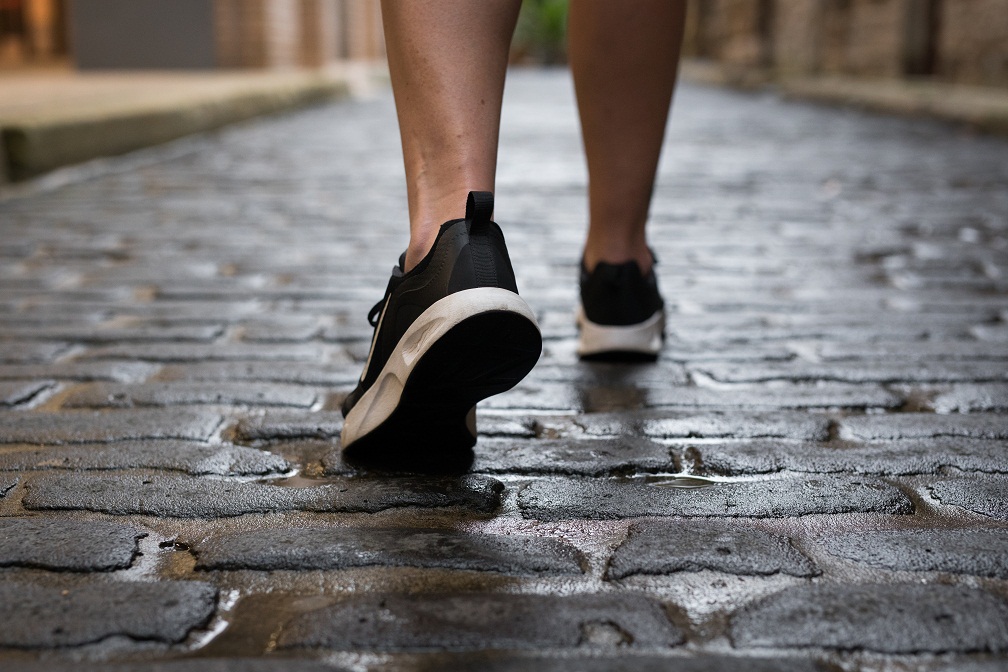What Does 10,000 Steps Mean?
Here’s a simple way to think about it: on average, it takes about 2,000 steps to walk a mile. When you hear about walking 10,000 steps, that’s roughly equal to five miles.
But remember, the length of your steps can change this. If you take longer steps, you cover more ground with each step, so you will only need so many steps to walk a mile. For instance, if you run, you cover more distance with each stride, so you don’t need as many steps to complete a mile.
Also, everyone’s steps are different. For example, when my wife Ava and I walk together, our step counts don’t match. That’s because she’s shorter, so she needs more steps to keep up with my pace, or I need fewer steps to match hers.
For, reaching 10,000 steps means we’ve walked close to five miles. It’s a good benchmark for staying active.

How Much Time Does It Take to Reach 10,000 Steps?
Let’s break it down: at a comfortable pace, most people walk about 1,000 steps in ten minutes. It’s faster than strolling in a grocery store but slower than when in a hurry.
At this pace, about 3 miles per hour, it would take 1 hour and 40 minutes to walk 10,000 steps. But here’s the thing: most of us only walk some 10,000 steps in one go. We usually accumulate steps throughout the day, combining regular movements with intentional walks.
The average person naturally takes around 4,000 steps a day. So, to hit the 10,000 steps goal, you’d need to add an extra hour of walking to your day.
How Many Calories Can You Burn by Walking 10,000 Steps?
Several factors affect how many calories you burn while walking 10,000 steps. Your weight, fitness level, and walking speed all come into play.
Imagine two average people walking at a brisk pace of 3.5 miles per hour, which means they’re taking purposeful steps, not just strolling. At this speed, you take about 133 steps in a minute.
According to Harvard Health research, if you weigh 155 pounds and walk 10,000 steps, you can burn around 447 calories. Walking the same steps for someone weighing 185 pounds burns about 555 calories. So, the more you weigh, the more calories you burn during those 10,000 steps.

Is Walking 10,000 Steps Daily Effective for Exercise?
Absolutely! Walking is fantastic exercise. It’s convenient, you can do it almost anywhere, and it’s sustainable for many years.
According to the Centers for Disease Control, we should aim for 150 to 300 minutes of moderate exercise weekly. Walking at a speed of 3 mph falls into the moderate activity category. So, if you’re walking 10,000 steps daily at this pace, you’re getting 700 minutes of moderate exercise each week. That’s more than twice the CDC’s recommendation, making it an excellent way to stay fit and healthy.
What Research Reveals About Walking 10,000 Steps daily?
You can walk less than 10,000 steps daily to meet the CDC’s exercise guidelines. Recent studies have questioned the 10,000 steps goal, suggesting you can still be healthy with fewer steps.
However, aiming for 10,000 steps comes with extra advantages. The discussions about minimum steps focus on the least you need for health. Hitting 10,000 steps means you’re above this minimum requirement, offering extra benefits.
Beyond what 10,000 steps give you, it’s also about what it prevents. Walking more means you’re sitting less. Research shows that sitting too much is bad for your health, and some even compare it to the health risks of smoking.
By walking 10,000 steps a day, you’re intentionally moving more, which means you’re sitting less. This change is a significant benefit for your overall health.

Origin of the 10,000 Steps a Day Goal: Who Introduced It?
The recent criticism about walking 10,000 steps daily isn’t because it’s a scientifically proven target. It’s not a magic number discovered through research.
The idea of 10,000 steps originated from a marketing campaign in 1965 by a Japanese company. They introduced a pedometer called Manpo-kei, which translates to 10,000-step meter in English. The campaign worked well, and the goal of 10,000 steps a day became popular. People like excellent, round numbers, so this goal became popular.
Is Striving for 10,000 Steps Daily a Worthwhile Target?
The real question is, What are you aiming for? Suppose you aim to achieve up to 700 minutes of moderate exercise weekly, burn extra calories, and sit less. In that case, walking 10,000 steps daily is a fantastic goal.
However, your main aim is to form a regular exercise routine and meet the minimum activity guidelines suggested by the CDC. In that case, you can walk less than 10,000 steps a day. I strongly recommend against it if you’re starting!
Once you’ve built a habit and gained some fitness progress, consider making 10,000 steps a daily goal in the long run.
Are There Drawbacks to Walking 10,000 Steps Every Day?
For many people, aiming for 10,000 steps a day can be overwhelming. Going from an average of 4,000 to 10,000 steps means adding an hour of walking to your day. This requires a certain fitness level and finding the time, which can be challenging.
Here’s what often happens: someone starts their fitness journey enthusiastically. They set 10,000 steps as their daily goal because they think it’s what they should do. They begin walking excitedly, but reality kicks in after a week or so. They feel tired, and finding an extra hour for walking becomes less appealing than other enjoyable activities. Plus, there are no immediate visible results from all that walking. Eventually, the goal of 10,000 steps is abandoned.
The downside to aiming for 10,000 steps a day is that it could be a better starting point. You might not even need to walk that much if your primary health and fitness goal is to be more active than you are now. That’s an excellent goal and doesn’t require hitting 10,000 steps daily.
However, if you want to achieve more than being active, setting a goal of 10,000 steps daily is acceptable in the long run. It’s essential to start small and build a fitness habit first. Focus on creating a habit that you can sustain and enjoy. This momentum will naturally lead you toward achieving 10,000 steps in a manageable and fun way!

